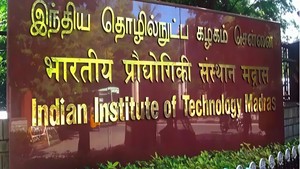Godrej Enterprises Group’s aerospace division has delivered a human rated L one ten stage Vikas engine to the Liquid Propulsion Systems Centre of ISRO. This engine will form a key part of the LVM three Gaganyaan launch vehicle that will carry Indian astronauts into space.
The Gaganyaan programme aims to send a crewed mission into low Earth orbit in the coming years. ISRO is planning three uncrewed test flights before the main human mission, with the first test flight targeted before the end of the current financial year.
Four decades of partnership with ISRO
Maneck Behramkamdin, executive vice president and head of the aerospace business at Godrej, called the delivery a moment of national pride. He said contributing to India’s first human spaceflight mission is both an honour and a serious responsibility for the company.
Godrej has worked with ISRO for more than four decades, supplying engines and components for missions such as Chandrayaan and NISAR. The human rated Vikas engine continues that partnership and showcases the company’s ability to deliver technology that must meet the higher safety margins required for crewed flights.
Parachute tests move Gaganyaan forward
The progress on propulsion comes soon after another milestone for Gaganyaan. ISRO completed an important test of the main parachute system for the crew module at Babina Field Firing Range in Jhansi on November three.
As part of a series of integrated airdrop tests, a simulated crew module mass was released from an IL seventy six aircraft at an altitude of two and a half kilometres. The parachute system, which uses ten parachutes across four different types, deployed as planned and brought the module to a stable, soft landing.
The test involved teams from the Vikram Sarabhai Space Centre, DRDO’s Aerial Delivery Research and Development Establishment, the Indian Air Force, and the Indian Army. It moves the mission a step closer to qualifying the system for human flight.
Building India’s human spaceflight capability
Taken together, the delivery of a human rated Vikas engine and successful parachute tests underline how India’s human spaceflight programme is steadily progressing. The LVM three Gaganyaan launch vehicle, fitted with this engine, will be responsible for safely lifting the crew module, while the parachute system will ensure astronauts return safely to Earth.
For India’s space ecosystem, each completed test and hardware delivery builds confidence and experience that will be vital for future crewed missions and more ambitious projects such as long duration space stays and deep space exploration.
For deeper coverage of India’s space and defence tech, follow Tech Moves Instagram and Tech Moves Facebook.














